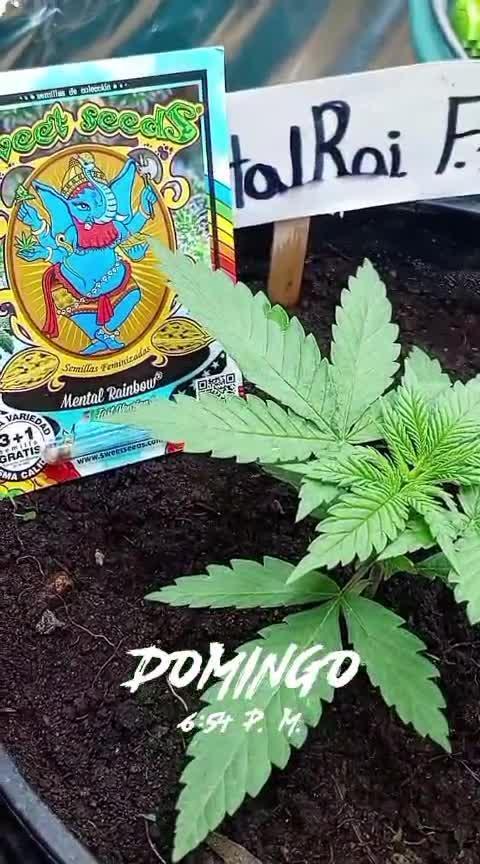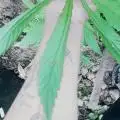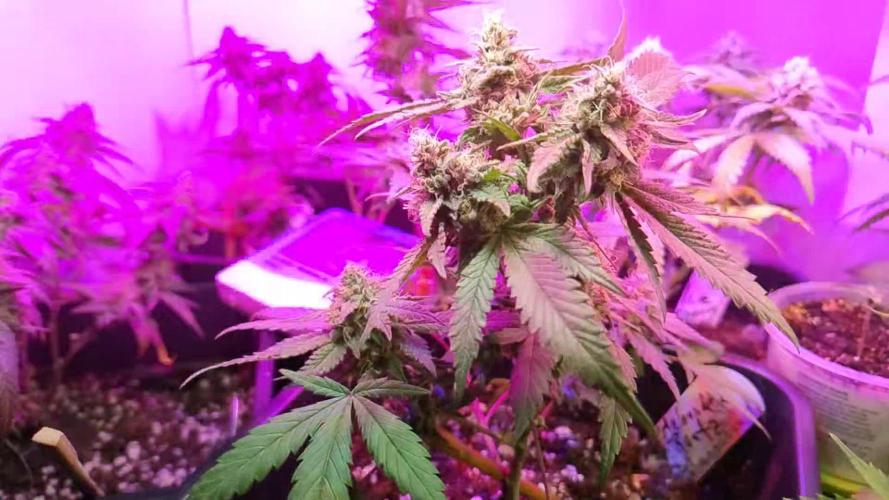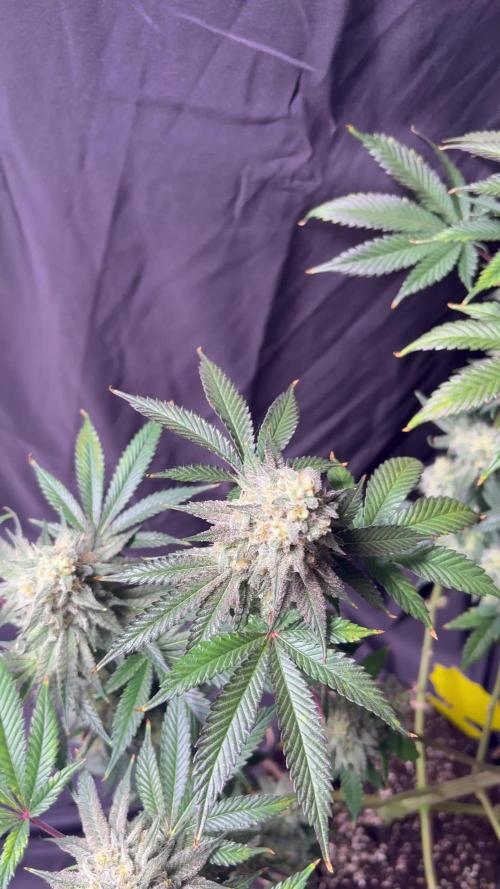The Grow Awards 2026 🏆 

























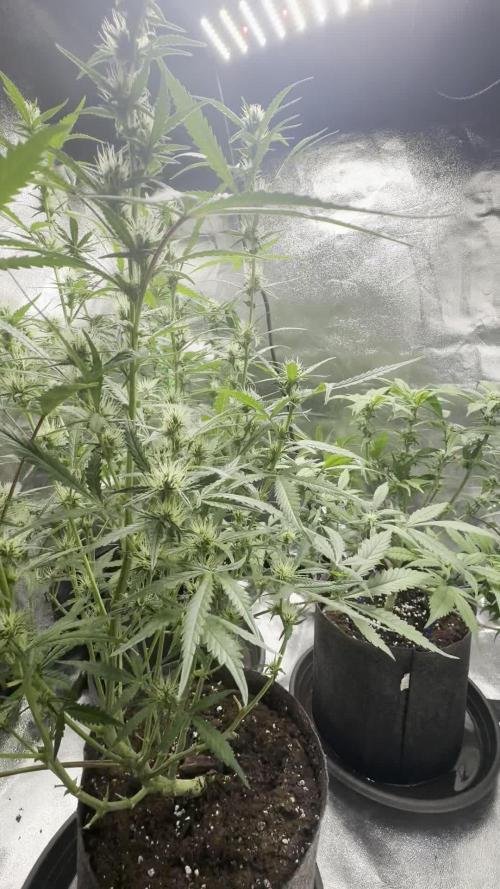

Likes
Comments
Share


@valiotoro
Follow
Always rock hard buds💥
Sticky glue👀
The smell is divine & refreshing :
imagine a walk in a pine Forest in Summer with hint of lemon🤤🍋🌲
Moon safari effect
Likes
16
Share


@DaddyPrime2
Follow
5/28 I think she's about to go off.
6/2 she's been droopy leafed for a bit. I backed off on nutrients for over a week. I thought it may have been overwatering but at the same time I don't want to kill off the microbe life in my soil right now by letting it get overly dry. I'm more experienced with coco and the dry back is more aggressive and intense and with soil it's a little different and slower but it als9 cant dry back as
Likes
25
Share


@eldruida_lamota
Follow
Vamos con la próxima semana de las Casey’s Rollex O.G. De dutchfem. Es una variedad que estoy alimentando casi como al resto, pero no las tengo bien atendidas, aun así siguen adelante y están engordando bastante bien.
Aplicamos más nutrientes para seguir con El Progreso.
.
La humedad esta al 45% la temperatura está entre 21/25 grados , y como siempre el ph , ya que es de lo más importante,está en 5,8/6,0.
.
AgroBeta:
1 ml x L Flowering black line , vía radicular.
0,2 ml x L Beta shark, vía radicular.
0.5 gr x L mega PK , vía radicular.
1 ml x L Terminator, vía radicular.
0,5 gr x L Engordacogollos, vía radicular.
0,3 ml x L Tucán , vía radicular.
0,1 ml x L Betazyme, vía radicular.
0,3 ml x L Tricoma, vía radicular.
0,05 ml x L Gold Joker, vía radicular.
0,2 ml x L Silver, vía radicular.
.
Hasta aquí todo familia 🕸️ , un saludo y buenos humos fumetillas💨💨💨.
Likes
24
Share


@Canadian
Follow
Day 57 the plant has been growing healthy and fine but she is a slow grower .
I know that most of the growers in this platform and elsewhere do defoliate and trim down all the lower branches of the plant so that the plant can concentrate all its energy into the higher bigger and better buds .and I do not do this because I drive the plants very hard with nutrients and those lower branches with small buds always give me the first sign of anything going wrong with her and that's why I leave them as a buffer zone to protect the bigger buds and that way I can push her as hard as I want.
not much to mention about her thank you for reading I will continue to update have a happy grow
Likes
7
Share


@CanarianGrow92
Follow
A regular week for the girls, we just gave some nutrients and will start to add some ultra pk this week, 1 phenotype shows some difference in the buds and the other 2 are exactly the same, lets see, im curious about these girls as these seeds are from a low cost seed bank and its nice to compare this with more expensive seeds, at the moment i dont see any issue at all, they are not affected by the stress (i did HST as i cut some of the tops) so great news 😁👍
Likes
6
Share


@valiotoro
Follow
Hello everyone week 4 of flower has passed for this Mint Jelly auto ❄️
For the feeding schedule i stopped feeding Power Roots and Pure Zym and started feeding Green Sensation 0,5/l
Mars hydro FC-E6500 75%
have a great day and wish you all happy growing 😎👨🌾🏻
Likes
9
Share


@Atom_x_Andromeda
Follow
Plants are loving life Got a exhale bag There made in a town in the state i live in thats BA Hows The Girls Lookin 2 You Guys, i need advice im an outdoor guy so all this building my environment is new to me
Processing
Likes
58
Share


@Poleeg1986
Follow
So what I have to say?) I am proud of little beauty girl)) I am going make harvest in 2-3 weeks... I am really waiting for harvest day...😋
Day 52. I add 2l water with 4ml "sensi cal-mag extra" from "Advance nutrients".
Day 53. I did some modification to increase mass...
Likes
49
Share


@LockDownGrow
Follow
So really packing on weight now and looking the picture of health , nutrients really doing there job and plants are loving them ,
Really excited too get too the end of this grow now ,
Update at the end of week 8 she developed slight leaf tip yellowing after a week on full strength more PK at 2ml per ltr then a second week at a reduced 1ml per ltr the yellowing is only slight and a good sign you are pushing the limits of the feeding ,
Showing signs of ripening now so next week I will begin the flush ,
Likes
29
Share


@Twizz
Follow
Weather has been rainy and windy so she has been living under a shelter at nights and most days. The climate is getting moisty here so i decides to remove some fanleafs again to keep a good airflow. Buds are getting bigger and they make me wanna sing
' I like big buds and i can not lie..'
Likes
44
Share


@RakonGrow
Follow
Note : Jegliches Equipment aufgelistet welches ich nutze findet Ihr in der Germinations Woche !!!
200PPFD 20/4
Day 14:
+ Düngen
+ + 0.5L Flaschenwasser (EC 0.36)
+ + Canna Terrar Vega 2.9ml
+ + Canna Rhizotonic 2ml
+ + PH 6.0
Likes
32
Share


@Doubleb84
Follow
She started flowering this week yay! Slowly upping the nutrients, have read so much about giving half strength of Fox Farms so I don’t want to over do it.
Have a few leaves that have a few spots of discoloration, and I noticed the stems turning a bit purple but overall still really
healthy!
Overall going well! Going to keep upping the nutrients.
Likes
7
Share


@Rusty_Shackleford
Follow
Drowned a few seeds, lesson learned. Super thankful for these beautiful girls. 4 WW, 3 BK, 3 JH, 1 Lemon haze. All feminized autoflowers . Actual week 1 from germination.
Likes
6
Share


@thclover066
Follow
It’s been 5 days since my last post, but from here on let’s count it as 7 days—the plants are developing much faster now, so I’ll be sharing updates and videos more often to make it exciting!
This week I finally got my hands on Terra Bloom, and today I also introduced PK 13-14 for the first time. I started light, at 2ml per 10L, and I plan to gradually ramp it up over the next few waterings until I reach about 6ml at peak, then taper off and stop before the final flush.
The buds are swelling nicely, and overall the plants are thriving. The third plant is still a bit behind the others, but I gave her the same PK 13-14 dosage as an experiment—I want to try new approaches and see how she responds.
Really happy with the progress so far, and it’s getting more exciting every day as the flowers start stacking up!😋😋











